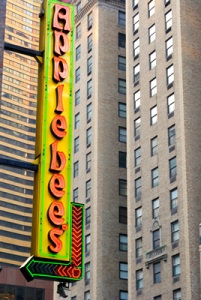 There is a common misconception that one must be 21 years old to obtain a TAM® Card, but in reality TAM® training is available to individuals ages 16 and up. Remember, anyone who works in sales and service of alcoholic beverages, or in security at establishments that serve or sell alcoholic beverages in Southern Nevada must obtain an alcohol awareness card (Nevada Revised Statutes). Many minors and young adults work in positions that may require them to have their cards. Examples include cashiering or clerking at grocery and convenience stores. Workers ages 16-17 may handle sealed alcoholic beverages such as wine bottles or beer cans if they are employed at these types of establishments, as long as they are supervised by an adult.
There is a common misconception that one must be 21 years old to obtain a TAM® Card, but in reality TAM® training is available to individuals ages 16 and up. Remember, anyone who works in sales and service of alcoholic beverages, or in security at establishments that serve or sell alcoholic beverages in Southern Nevada must obtain an alcohol awareness card (Nevada Revised Statutes). Many minors and young adults work in positions that may require them to have their cards. Examples include cashiering or clerking at grocery and convenience stores. Workers ages 16-17 may handle sealed alcoholic beverages such as wine bottles or beer cans if they are employed at these types of establishments, as long as they are supervised by an adult.
Rules are different for hospitality professionals working at on-premises locations, and this is often where the confusion about alcohol awareness training regulations comes in. One must be 21 years or older to serve alcohol for consumption on the premises. In other words, if you work in a bar, restaurant, casino or other establishment where you are responsible for mixing or serving open alcoholic beverages, you must be of legal drinking age yourself. Additionally, one must also be 21 or older to be allowed inside a casino. These rules are applicable to individuals in positions such as bartenders, waiters, cocktail servers, etc.
Need help making sure you or your staff is in compliance with all applicable rules and regulations? Learn more about laws and regulations for servers and sellers of alcoholic beverages in Nevada and complete your mandatory alcohol awareness training with TAM®. Laws and statutes can be confusing because they are at the state, county, and city levels; and yes, there are additional gaming regulations in some cases. TAM training will cover all of these laws with you and make sure you understand the ways to reduce your risk and liability. Also remember to follow the rules of conduct laid out by your employer. Many companies have additional policies to maintain guest and employee safety, so make sure to check with your manager or supervisor about any extra procedures in place.
Resources

 The ban on caffeinated alcoholic beverages, also called alcopop, was one of the biggest stories in the beverage service and sales industry in 2010. Popular beverages such as Four Loko were called dangerous, a binge in a can, and worse. Last November the Food and Drug Administration declared alcoholic energy drinks to be a public health concern. The FDA concluded that caffeine added to malt alcoholic beverages was an unsafe food additive (
The ban on caffeinated alcoholic beverages, also called alcopop, was one of the biggest stories in the beverage service and sales industry in 2010. Popular beverages such as Four Loko were called dangerous, a binge in a can, and worse. Last November the Food and Drug Administration declared alcoholic energy drinks to be a public health concern. The FDA concluded that caffeine added to malt alcoholic beverages was an unsafe food additive ( A recent news story regarding the accidental service of an alcoholic beverage to a minor is making waves, and it serves to remind us exactly why alcohol awareness education is so important. A toddler was recently served an alcohol-infused margarita mix in place of apple juice at an Applebee’s restaurant in Michigan, possibly the result of a mislabeled bottle at the bar. You can read the full story on The Detroit News’ website
A recent news story regarding the accidental service of an alcoholic beverage to a minor is making waves, and it serves to remind us exactly why alcohol awareness education is so important. A toddler was recently served an alcohol-infused margarita mix in place of apple juice at an Applebee’s restaurant in Michigan, possibly the result of a mislabeled bottle at the bar. You can read the full story on The Detroit News’ website 